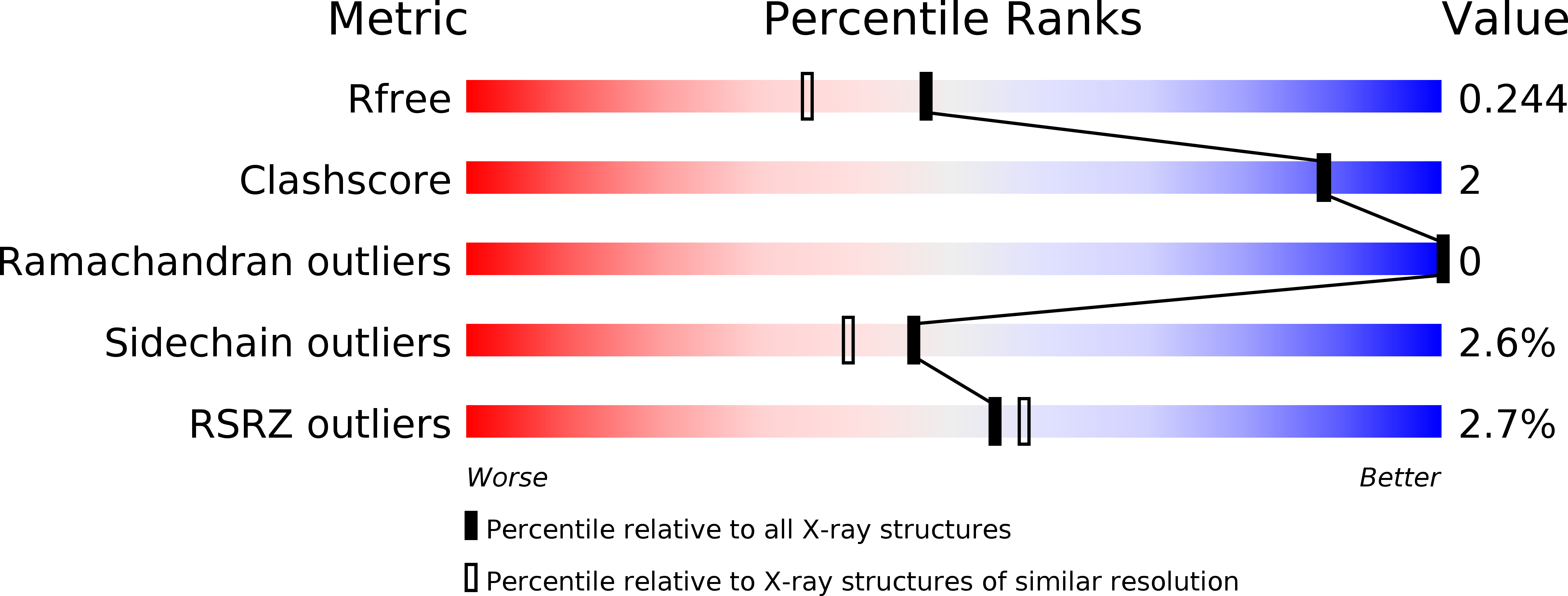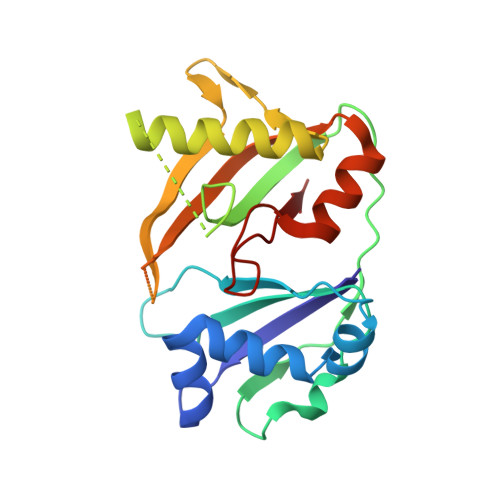Crystal structure of hypothetical protein TTHB192 from Thermus thermophilus HB8 reveals a new protein family with an RNA recognition motif-like domain
Ebihara, A., Yao, M., Masui, R., Tanaka, I., Yokoyama, S., Kuramitsu, S.(2006) Protein Sci 15: 1494-1499
- PubMed: 16672237
- DOI: https://doi.org/10.1110/ps.062131106
- Primary Citation of Related Structures:
1WJ9 - PubMed Abstract:
We have determined the crystal structure of hypothetical protein TTHB192 from Thermus thermophilus HB8 at 1.9 A resolution. This protein is a member of the Escherichia coli ygcH sequence family, which contains approximately 15 sequence homologs of bacterial origin. These homologs have a high isoelectric point. The crystal structure reveals that TTHB192 consists of two independently folded domains, and that each domain exhibits a ferredoxin-like fold with a four-stranded antiparallel beta-sheet packed on one side by alpha-helices. These two tandem domains face each other to generate a beta-sheet platform. TTHB192 displays overall structural similarity to Sex-lethal protein and poly(A)-binding protein fragments. These proteins have RNA binding activity which is supported by a beta-sheet platform formed by two tandem repeats of an RNA recognition motif domain with signature sequence motifs on the beta-sheet surface. Although TTHB192 does not have the same signature sequence motif as the RNA recognition motif domain, the presence of an evolutionarily conserved basic patch on the beta-sheet platform could be functionally relevant for nucleic acid-binding. This report shows that TTHB192 and its sequence homologs adopt an RNA recognition motif-like domain and provides the first testable functional hypothesis for this protein family.
Organizational Affiliation:
RIKEN SPring-8 Center, Harima Institute, Hyogo 679-5148, Japan.














